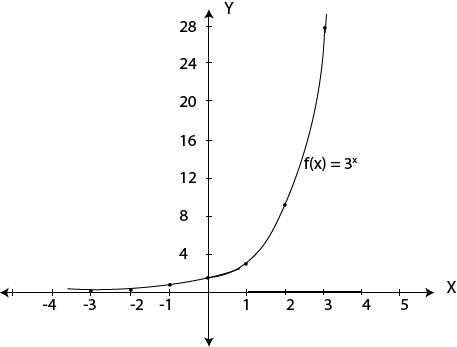BASIC PROPERTIES OF EXPONENTIAL FUNCTIONS
If a is a real number and a is greater than 0 (a>0) then;
F(x) =  is called an exponential function
is called an exponential function
Examples:
1. f (x) =
2. f (x) = 
3. f (x) =
4. f(x)=
Graphs of Exponential Function:
Example:
Draw the graph of f(x) =
Solution:

The properties of exponential functions
-Any Function of the form f (x) =  has the following properties
has the following properties
i. Increases when x is (+ve)
ii. Decrease when x is (-ve)
iii. It is constant when x=1
iv. It’s graph passes through (0,1)
v. It is one-to-one function
vi. It’s domain is {x: x∈IR}
vii. It’s range is {y: y is positively}
viii. It’s horizontal asymptotes at y=0
Roles of Exponential Functions
1. If n  N then
N then  is the product of N
is the product of N
This means;
If  = a x a x a x a x a
= a x a x a x a x a
But  =1
=1
2. If n,m  , then
, then
i. =
=  = (
= ( )n
)n
ii. =
= 
iii.  =
= 
iv. =
=
V. ( ) m =
) m = 
Example
Solve  = 8
= 8
Express them in terms of base 2
 =
= 
2(x-3) = 3
2x-6=3
2x = 3 + 6
 =
= 
X = 4.5
EXERCISE
1. Draw graphs of the following functions and determine the domain and range.
a)f(x) = 
b) f(x) = 2 + 
c) f (x) = 
2. Solve for x
a)  = 9
= 9
b)  =
= 
c)  =
= 
d)  =
= 
e)  =
= 
THE CALCULUS OF EXPONENTIAL FUNCTIONS
A) The derivative of f (x) = 
Recalling that:
 = 1 + x +
= 1 + x +  +
+  +
+  + …………
+ …………
If y = 
 =
=  (
( )
)
=  (1 + x +
(1 + x +  +
+  +
+  + …………
+ …………
= 0 + 1 +  +
+  +
+  + …….
+ …….


